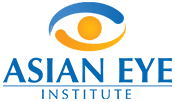
As a child, Briza Mae Ramos was diagnosed with nearsightedness, a type of refractive error wherein she could see close objects clearly, but far objects appear blurry. At 11 years old, she had an eye grade of 300, and it increased to 400 in a year’s time.
“I was 8 when I started having vision problems. It was difficult for me to read, sew and see the words on the blackboard,” she shared, “That is why the school clinic advised me to consult a doctor. Every year, I would go for a checkup and find out that my eye grade increased by a hundred.”
Nearsightedness occurs if the eyeball is too long than normal or if the cornea (the clear layer that covers the eye) is too curved. According to Asian Eye Institute Pediatric Optometrist and Orthoptist Dr. Gualberto Dato, “We need light to see. In a normally shaped eye, the incoming light is focused on the retina, so the image is sharp. In nearsightedness, because the eyeball is long, the light is focused in front of the retina, making the distant objects appear blurry.”
The cause of this condition is still unknown, but a child’s risk may increase if one or both of his or her parents are nearsighted.
Nearsightedness is usually first diagnosed in children between 4 to 6 years old and continues to progress until they are in their 20s. He explained, “The eyeballs continue to grow, so the eye grade may increase rapidly and require the patient a pair of new eyeglasses every year. It usually stabilizes by age 20.”
Eyeglasses are the most widely used method to correct nearsightedness. However, these will not help prevent the rapid increase in eye grade. Zeiss, a German manufacturer of optical products, introduced a new treatment through Myovision Lenses. These lenses can reduce the progression of nearsightedness in children aged 6 to 12 years old, by an average of 30%.
The Myovision Lenses are designed with Peripheral Vision Management Technology. “The Myovision Lenses can correct both central and side vision and help slow down eye growth. At the same time, these lenses look like regular ones, so they are comfortable to wear and may only require a short period of adaption,” he said.
Ramos started wearing Myovision Lenses when she was 12 years old. If it weren’t for these lenses, her eye grade could have continued to increase. Today, she says that she is very satisfied with her lenses, “It was very alarming for me to know that my eye grade kept increasing by a hundred every year. I’ve been wearing Myovision for three years, and thankfully, it has not increased since.”
Most children are not aware they have vision problems. As such, Dr. Dato encourages parents to be mindful of signs of vision problems in their children. “Parents should note if their children persistently squint or partially close their eyes to see clearly, blink excessively, find the need to sit closer to the TV or in front of the classroom, rub their eyes frequently and suffer from frequent headaches.”
“It is best if we detect nearsightedness early,” he said, “Even if your child does not complain of having blurry vision or any vision problem, take them to a pediatric eye doctor for a routine eye exam. We highly recommend this before they go to school because undetected nearsightedness may cause more serious problems in the future like lazy eye or retinal detachment.”
Asian Eye is located at Phinma Plaza in Rockwell Center, Makati with satellite clinics in TriNoma, Mall of Asia, Commercenter Alabang, UP Town Center and Legaspi Towers 200. For inquiries and appointments, you may call 898-2020 or email [email protected]






